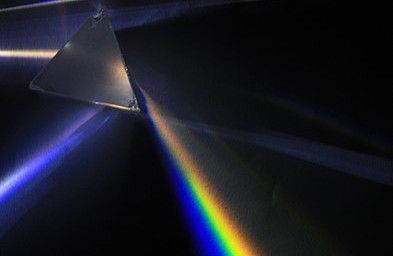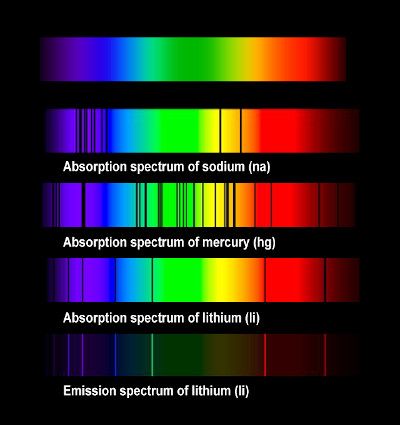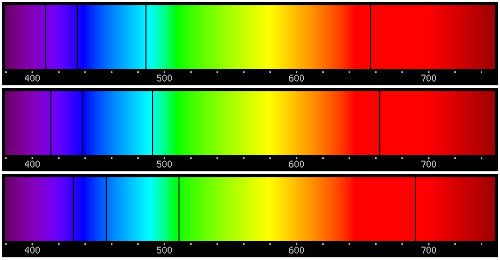Hello everyone,
I hope you are all doing very well, it is good to be doing well. I suppose you aren't doing, rather you are being well. In life and morality, we are trying to maximise our well-being, which simply means we want to be well.
I have been doing very well, flourishing even. These COVID-19 times I have been spending working on various projects, recently I have been volunteering to build a website for a software project I have grown fond of. It has been really rewarding and fun. I am also learning a lot while doing it, I feel like rebuilding the interface of my website now. It is very fun to be able to make something that looks and works exactly as you want.
Earlier this week I rewatched a little of the epic documentary Cosmos by the great Carl Sagan and memories came flooding back in. The first time I saw it was back in 2012 in the week after my first ten day meditation retreat. I remember decided then and there that this was the best thing I have ever had the pleasure of watching. I really should take the chance to rewatch the whole thing — it is about time.
In this letter, I will make the attempt to tap into these memories and write about the beginning of it all — that is; how everything began and why we believe it did.
Up until now
Carl Sagan on the beginning of the universe, to now.
13.8 billion years ago the universe as we know it began in the cosmic event we now as the Big Bang. The universe was simple, there were no complex structures but radiation, light, white-hot expanding fast. As this radiation cooled, it condensed into pockets of gas — which would become the galaxies.
The force of gravity caused matter in these pockets to coalesce and form massive entities.
Buckling under the pressure of their own mass, these entities flared up to incredible levels of heat and began to shine. These were the first generation of stars.
In these stars, the elements as we know them were created.
When compacted together under immense pressure the atoms that make up these stars fuse, lighter elements combine to form heavier ones. This process is called Nuclear Fusion — the nuclei of two atoms fuse — and is the reason why stars shine. The light and heat from stars is the excess energy from this process. Solar energy is nuclear energy.
In the beginning, there was only hydrogen but in the stars, they fused and for the first time helium, carbon, oxygen, silicon and heavier elements formed.
When the massive stars exhausted their fuel they exploded in what are referred to as Supernovas. In these explosions, all the elements forged in these stars were released into the universe for the first time.
Once again gravity caused these clouds of matter to coalesce into a new generation of stars — this time with heavier elements to begin with. In the second generation of stars, the process of nuclear fusion played out further, even more elements including the heavier metals were forged.
Like their parents, the second generation of stars expired after some time. The largest of them in the form of supernovas, once again ejecting their newly created elements into space.
From the dust from the leftover clouds — known as nebulae — the third generation of stars form including our sun, which is a grandchild of the very first stars. Tiny fragments of these nebulae became masses of rock and ice pulled into the orbit of nearby stars, we call these planets.
One of these planets, in an inconspicuous corner of a fairly ordinary galaxy, was a world that Carl has referred to as a pale blue dot — our home, Earth.
We forget the strangeness and profundity of our circumstance all too easily. Everywhere we look at, everything we see, everyone we interact with as well as ourselves is made up of the elements that cooked in the stars.
Everything you see was once a part of a star. We are star stuff.
"We are a way for the cosmos to know itself."
Carl Sagan
How do we know this?
When we look out through our telescopes to the galaxies far away, we can see them receding into the distance.
If everything is moving away from each other, it follows that they must have been closer together in the past. If we rewind this all the way back, would we see a time when all the matter and energy in the universe inhabited a single point?
"We observed that distant galaxies, they are moving away from us. They must have been closer together in the past."
Stephen Hawking
The transition from this point to the vast cosmos is what we refer to as the Big Bang.
Time to revisit high school physics.
The visible light we see — white light — is made up of a spectrum of colours.
Newton was able to reveal them, discovering that when you shine light through a prism it splits into the colours of the rainbow.

What we call white light is, in fact, a mixture of all the colours in the visible spectrum. When you look at a tree, the green of its leaves is because the structure of their molecules absorbs the entire spectrum except for green light. When the reflected green light comes into contact with your eye, the process of seeing green begins.
The structure of a molecule causes it to absorb some wavelengths of light, and reflect others. The colours we see in any given thing, are the wavelengths reflected by them — and an indication of their molecular structure.
Unravelling Starlight
Spectroscopy is the study of the interaction between matter and light. Quintessential to the field is the Newtown's unravelling of white light into a spectrum of colours by shining it through a prism.
Three facts to consider here:
- All stars are made up of elements
- Every element has a unique set of wavelengths that they absorb
- When you pass light through a prism, the full spectrum within it is revealed
Look carefully at the below image:

The first rainbow band is what we see when we shine pure light through a prism. All the visible colours in a spectrum.
But this is not what we see when we shine starlight through a prism.
Every element absorbs certain wavelengths of light and reflects the rest.
This is why we have different colours.
An apple is red because when light hits the surface, it absorbs all of the non-red parts of the spectrum and reflects red light into our eyes.
Now, look at the second, third and fourth bands. These are called absorption spectrums. In particular, these are the spectrums for sodium, mercury and lithium.
If light were to pass through sodium vapour, and I were to pass it through a prism, rather than a full rainbow what would be revealed would resemble the second band in the picture.
Every element absorbs a different set of wavelengths of light, the black bars in that image are the wavelengths which are absorbed by sodium.
When the light passes through the vapour, parts of its spectrum are absorbed by it, the rest is reflected. This is why there are missing parts of the spectrum.
The final bar in the image is the emission spectrum of Lithium. Looking at it, you can see that it is simply the absorption spectrum but inversed. These are the colours that lithium absorbs. When lithium is burned and the light passes through a prism, these bands of colour are revealed.
Every element has a known absorption spectrum. A known set of wavelengths that it absorbs, and therefore a known set of wavelengths that it reflects.
It goes to follow that if we take light from a distant star, and pass it through a prism, based on which bands of colour are missing we can deduce which elements are present in that star.
For example; if we took the light from a specific star, passed it through a glass prism and it revealed gaps corresponding with the second, third and fourth bands, it would imply that mercury, sodium and lithium existed in that star.
This is how we know what the stars are made from.
Redshifting and the Doppler Effect
There is a problem we seemed to have run into. When we have looked at the light from stars and distant galaxies through a prism, the results were similar to that of the known absorption spectrums, except shifted to the right.
Now look at the below image:

The first band here is the absorption spectrum of hydrogen. The band of colour you would expect to see if you shone light through a prism that had passed through hydrogen gas.
When looking at stars far away, what we observe more closely resembles the second band. When observing stars very far away, what we observe more closely resembles the third band.
Now make no mistake; there isn't an element in existence with absorption spectrums identical to hydrogen but shifted a little to the right.
These stars indeed do possess hydrogen.
The distortion we are seeing is due to the Doppler Effect.
Can you recall the sound of moving traffic?
Imagine you were standing on the edge of a long road, a car drives past.
It starts high pitched when it passes you it is lower, and as it speeds away from you it is lower still.
From the driver's point of view, the sound of the horn was the same. From your point of view, its pitched changed depending on whether it was moving toward or away from you.
The pitch of a sound is higher when the source is moving towards you, and lower when it is moving away from you.
Please watch this three-minute video explaining how this works. Seeing the visual representation of the waves can make this intuitive.
This isn't just with sound but with any waves. If the source of the waves is moving towards you the wavelength of said waves will be shorter, and when the source is moving away from you the wavelength will be longer.
Of course, this is also true for light.
A higher frequency sound wave translates to a higher-pitched sound that we hear. A lower frequency sound wave translates to a lower-pitched sound that we hear.
With light; a higher frequency light-wave translates to light that is more blue, and a lower frequency light-wave translates to light that is more red.
We call the Doppler effect when it is applied to light waves; blueshifting and redshifting.
The reason the spectrums of light of distant stars is shifted is that they are moving away from us.
We can determine how far away a star is from us from its brightness.
We can tell how fast a star is moving away from us from the redshifting of its absorption spectrum.
Is there a link between the two?
Yes.
The further away a star is the faster it is accelerating away from us.
The stars and galaxies in the universe are moving away from one another.
Given that this is the case, they must have been closer together in the past.
If we extrapolate this, we can imagine a time when all of matter and energy inhabited a singular point before expanding outwards. We call this event the big bang.
With what we know about matter and how it behaves when condensed and in high energy states we have modelled what an early universe would look like and how the process of expansion will play out.
Our observations match these models.
As light takes time to travel across space, the further out into the cosmos we look — the farther back through time we look.
If an alien living a hundred million light-years away were to look upon our planet, they would see not humans but dinosaurs.
When we look at the newest stars we find them to possess the heavy elements.
Observing older stars we find them to be made up of simpler elements, which is consistent with the idea of a simpler universe developing complexity over time.
And when we look to the very edge of the known, we can see the very background radiation which was the afterglow of birth to the universe as we know it — we can look 13.8 billion years back in time as see the beginning for ourselves.
When we saw that the stars and galaxies were moving away from each other we theorised a big bang at the beginning of it all. Since then every observation we have made have supported our models for an expanding universe and we have accepted it as our best explanation for all that we see.
More resources
-
Carl Sagan's Cosmos: The best series I have ever seen
-
Melodysheep's music video on the Big Bang: I was listening to this all-day
-
The Cosmic Background Radiation: We can see the universe's first light
It is now ten o'clock at night. I started writing this in the morning. This is probably the longest I have spent working on a single letter. Travelling back 13.8 billion years and back — this was a day well spent.
Thank you for reaching the end of yet another one of these letters, it is thanks to you that these words have meaning. The reason I write this is so that you can read it.
Please feel free to reply to this or any of my letters, I would love to hear what you thought of all this.
I remember when reading Free Will by Sam Harris, he ended basically by saying that he was hungry. Well, I am starting to grow sleepy so I will bid you adieu.
Good night everyone,
Sashin
Edits | 22nd of May, 2020
I was worried about the accuracy of everything I said in this letter, so I hired the wonderful Astrophysicist Kirsten Banks to read over my work.
I have made the following two amendments:
- Originally I said that "the stars and galaxies are moving away from one another", Kirsten corrected me on this. The stars within a galaxy are not moving away from each other. Not every galaxy is moving away from all others, this repulsion is seen at larger scales. Our neighbouring galaxy Andromedia is in fact growing nearer and is on a collision course with the Milky Way. Presumably the reason behind this, is because at shorter distances there isn't enough dark matter / dark energy in between to counteract the attraction of gravity.
- Towards the end of the letter, I originally said as "as we stare into the edges of the universe we can see the birth of the universe", but to be more accurate the Cosmic Background Radiation is the afterglow of the Big Bang, not quite the beginning. I've updated it since.
Discussion